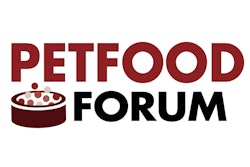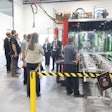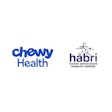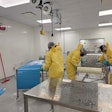MYOS RENS Technology Inc, a biotherapeutics and bionutrition company and the owner of Fortetropin, a proprietary bioactive composition that helps build lean muscle, announced the publication of a study that concluded that the use of Fortetropin decreased muscle atrophy in dogs following tibial-plateau leveling osteotomy (TPLO).
The study, titled, “Fortetropin inhibits disuse muscle atrophy in dogs after tibial plateau leveling osteotomy,” published in the peer-reviewed, open-access scientific journal, PLOS ONE (Public Library of Science), reports results from a randomized, double-blind, placebo-controlled study involving 100 dogs conducted by researchers at Kansas State University College of Veterinary Medicine. The study can be found here.
TPLO is the most common orthopedic surgery procedure performed on dogs in the United States. Dogs undergoing TPLO and other orthopedic procedures are often subjected to activity restriction, and the development of disuse muscle atrophy following orthopedic injuries has been well documented. The study evaluated the use of Fortetropin to reverse or inhibit disuse muscle atrophy in dogs recovering from TPLO surgery. The key highlights of the study results were:
● Dogs that received Fortetropin experienced reduced muscle loss compared to dogs that received the placebo (p<0.05).
● Dogs that received Fortetropin did not experience increased myostatin levels in contrast to dogs that received the placebo (p<0.05) (myostatin is a protein that significantly impedes the growth and development of new muscle tissue).
● Dogs that received Fortetropin experienced greater improvement in weight bearing capacity on their operated limb when compared to dogs that received the placebo (p<0.1).
Kenneth R. Harkin, DVM, DACVIM (SAIM), Professor and Section Head, College of Veterinary Medicine, Kansas State University, and principal investigator of the study, remarked, “This study demonstrates the benefits of Fortetropin in dogs with prolonged post-operative recovery periods. Restoration or maintenance of muscle mass through the reduction of serum myostatin levels with Fortetropin offers veterinarians a novel approach to in-home rehabilitation of injured dogs, including potentially improving or restoring mobility in geriatric dogs. Given that myostatin is the common denominator in muscle mass loss of various causes, Fortetropin potentially could also improve or restore mobility in geriatric dogs with muscle mass loss.”
“The results from this peer-reviewed study on the impact that Fortetropin has on recovery in dogs following TPLO surgery are very impressive,” commented Sherman O. Canapp, Jr., DVM, MS, CCRT, DACVS, DACVSMR, Co-Founder, Veterinary Orthopedic Sports Medicine Group, Annapolis Junction, MD, a key expert who was not involved in the study. “Based on the study results in this publication, I will definitely be recommending Fortetropin to my patients following orthopedic procedures.”
Joseph Mannello, CEO of MYOS, commented, “There are extremely few nutrition products available in the veterinary market that address muscle health and that have been studied as rigorously as Fortetropin. By investing in first class research at leading academic institutes, we aspire to redefine veterinary care for geriatric dogs and dogs recovering from TPLO. Multiple clinical studies have shown that the risk of mortality is elevated in dogs that experience muscle loss. As a result, we believe that the publication of this peer reviewed study represents a major milestone for MYOS as we look to expand our animal health business to address a need that has been largely unmet.”
According to an article in Vox, the pet supplement industry had an estimated value in 2018 of $636 million while the pet food industry is expected to reach $35 billion by 2024. Based on a survey conducted by the American Pet Products Associations, 67% of American households owned a pet, which translates to approximately 84.9 million households in the United States that include a pet of some kind.












